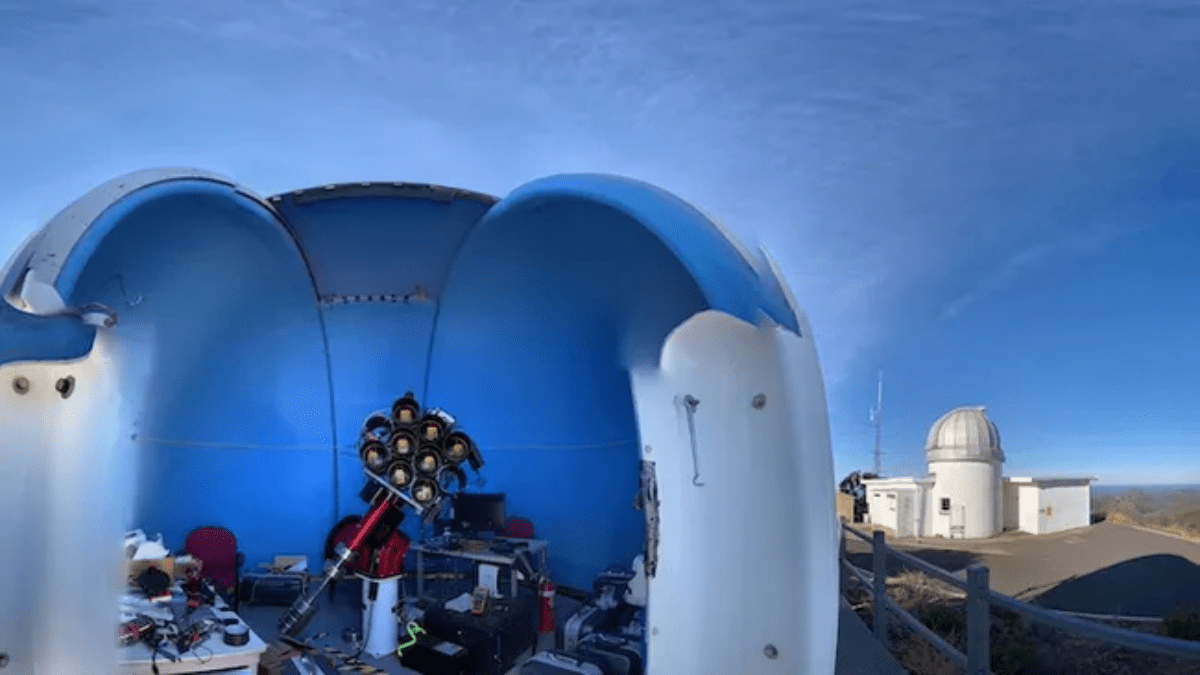A groundbreaking telescope design has paved the way for successful daytime skywatching, offering new opportunities for uninterrupted celestial observation.
Astronomers at Macquarie University in Australia have pioneered a new technique using light filters on the university’s multi-lens Huntsman Telescope. Initially intended for ultra-sensitive nighttime observations, the telescope has now shown it can accurately measure stars, satellites, and other celestial objects in broad daylight.
“Observing stars and satellites in optical wavelengths during the day has been attempted for centuries, but it has always been very challenging,” stated Sarah Caddy, one of the designers and builders of the Huntsman Telescope, in a university release. “Our tests indicate that the Huntsman can achieve remarkable results during daylight hours.”
The Huntsman Telescope: A Technological Marvel
Located at Siding Springs Observatory in Coonabarabran, New South Wales, the Huntsman Telescope integrates an astronomy camera and astro-mechanical focusing equipment with an innovative array of 10 highly sensitive 400mm Canon lenses. These lenses work in unison to monitor the same section of the sky, capturing thousands of short-exposure images per second. These images are then processed by an attached camera, as described in the university statement.
Typically, sunlight overwhelms the faint light from planets, stars, and galaxies, restricting ground-based observatories to nighttime operations. However, by utilizing special broadband filters, the Huntsman Telescope can block most daylight while allowing specific wavelengths from celestial objects to pass through.
The research team tested their filtering method on a mini-Huntsman single-lens pathfinder telescope for several months, optimizing exposure times, observation timing, and precise tracking of targets through atmospheric turbulence.
One of the key targets for the researchers was Betelgeuse, a red supergiant star approximately 650 light-years from Earth. Betelgeuse garnered attention in 2019 after a sudden change in brightness, likely due to a mass ejection that formed a dust cloud temporarily obscuring the star’s light. This activity suggests Betelgeuse is nearing a supernova explosion.
“This breakthrough enables uninterrupted, long-term studies of stars like Betelgeuse as they undergo powerful eruptions near the end of their life, expelling vast amounts of stellar material in the final stages of the cosmic cycle of rebirth,” explained Lee Spitler, co-author of the study and associate professor at Macquarie University. “Astronomers are keen on observing supernova events in the Milky Way because they reveal crucial information about how elements are formed in the universe.”
Broader Implications for Astronomy
Daytime observations also facilitate continuous monitoring of satellites, space debris, and other artificial objects orbiting Earth, which is crucial for preventing potentially hazardous collisions.
“With approximately 10,000 active satellites currently in orbit and plans to launch an additional 50,000 low Earth orbit satellites in the next decade, there is a clear need for dedicated telescope networks capable of detecting and tracking satellites around the clock,” said Caddy, the lead author of the study on Huntsman’s daytime observations. “Daytime astronomy is an exciting field, and with advancements in camera sensors, filters, and other technologies, we have seen dramatic improvements in the sensitivity and precision achievable under bright-sky conditions.”
Their findings were published on May 20 in the Publications of the Astronomical Society of Australia, marking a significant advancement in the field of astronomy and setting the stage for future innovations in both daytime and nighttime skywatching.

